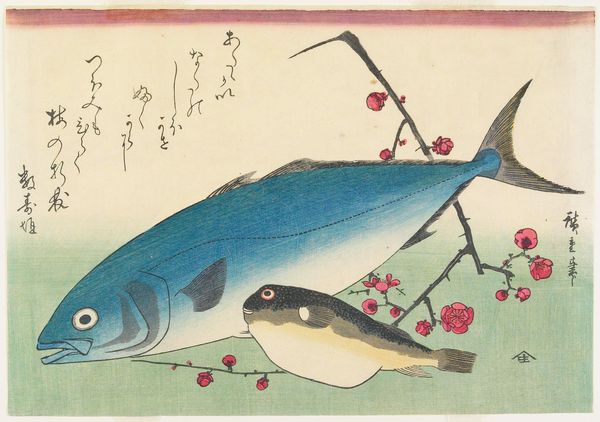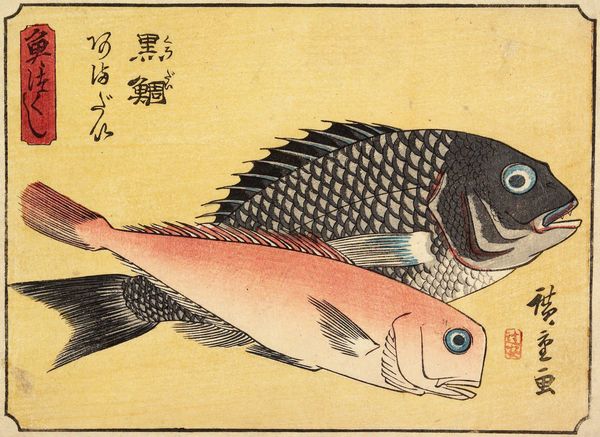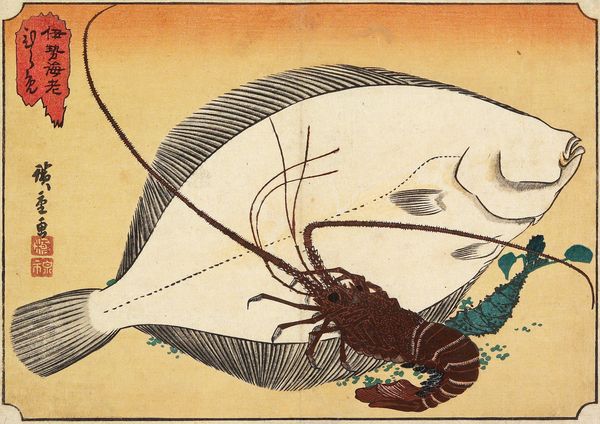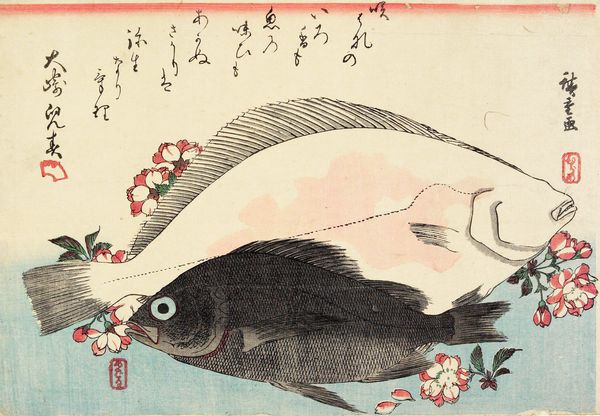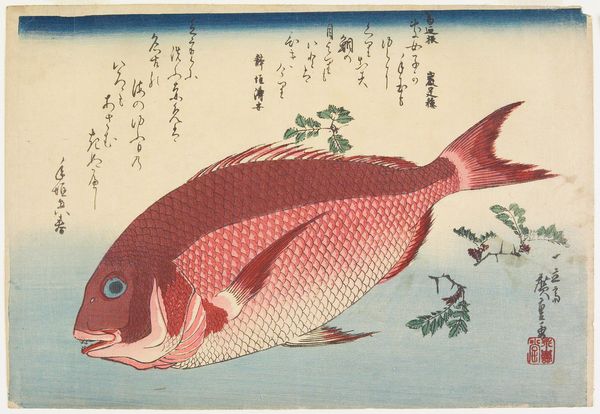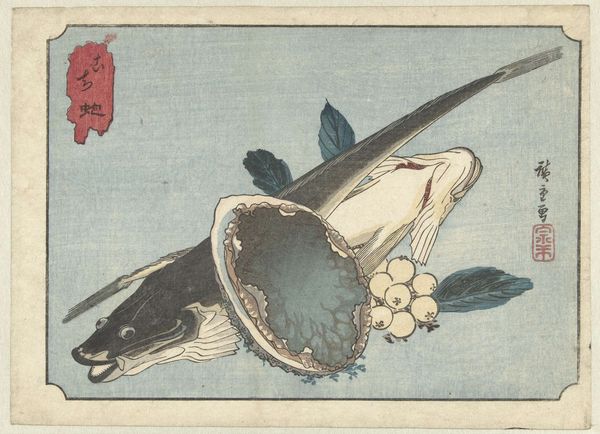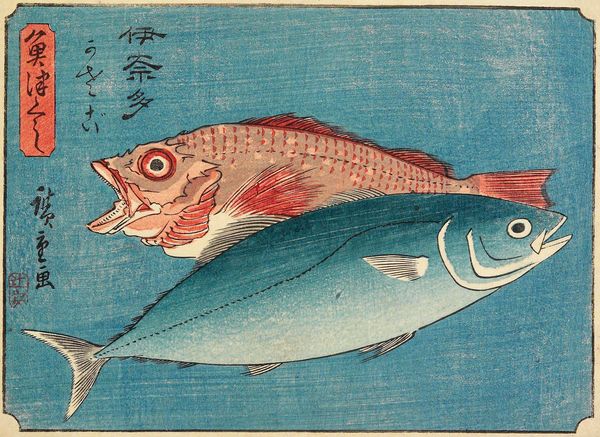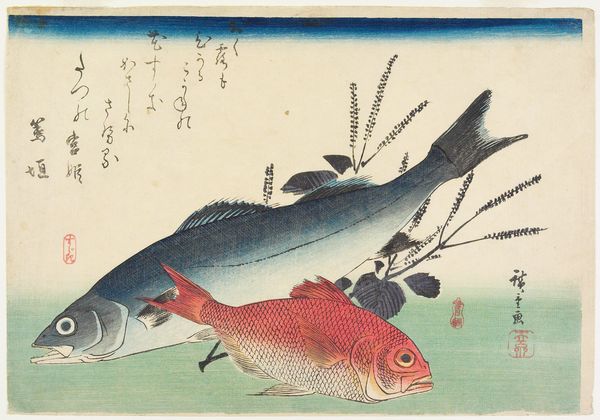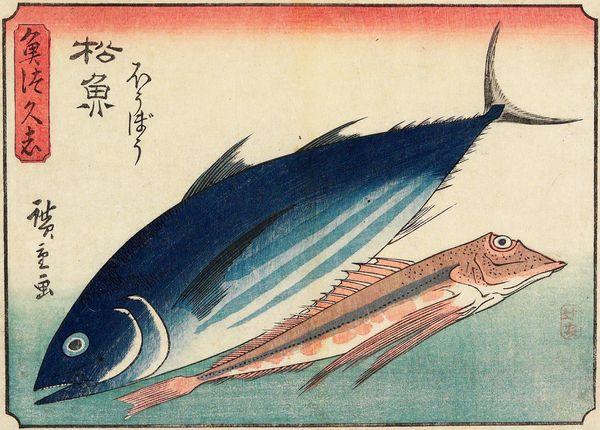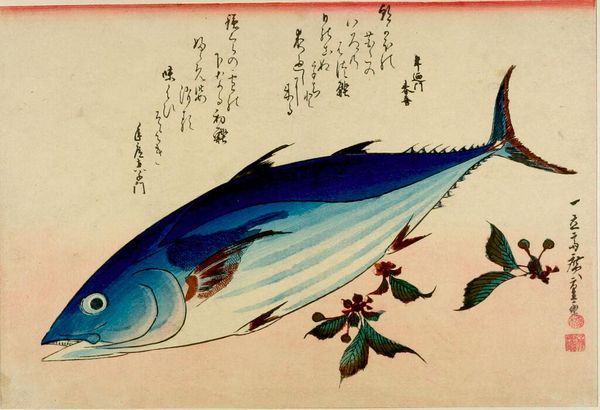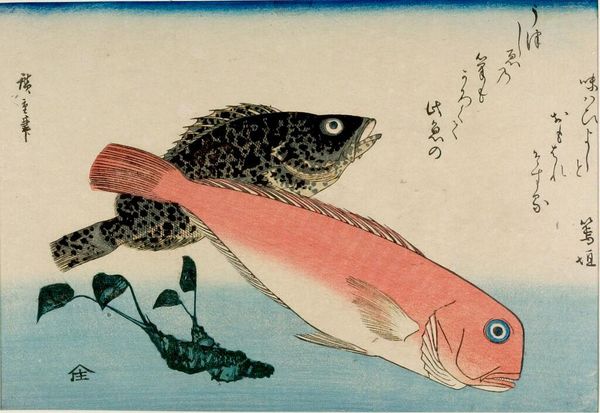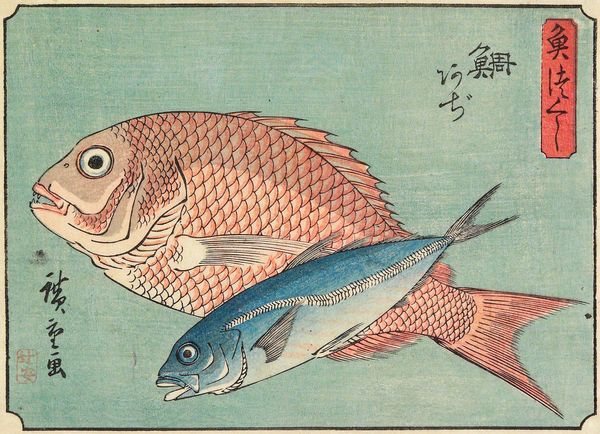
print, ink, woodblock-print
# print
#
ukiyo-e
#
ink
#
woodblock-print
#
watercolor
Dimensions: 5 15/16 × 8 1/8 in. (15.1 × 20.7 cm) (image, horizontal chūban)
Copyright: Public Domain
Utagawa Hiroshige created this woodblock print called Globefish and Flounder using ink and color on paper. This print, now housed at the Minneapolis Institute of Art, raises questions about the relationship between art, commerce, and popular culture in 19th century Japan. Hiroshige was a leading artist in the ukiyo-e tradition, which flourished during the Edo period. Ukiyo-e prints were often made for the entertainment and pleasure of the urban middle class, who were increasingly interested in depictions of everyday life, landscapes, and popular culture. Note the way the print depicts two types of fish, a globefish and a flounder, both of which were common foods in Japan at the time. The print may have been commissioned by a fish merchant or restaurant to advertise their wares. Art historians consult a variety of sources such as historical records, social commentaries, and economic data to understand the social and cultural context in which the work was made. These sources help us to understand the relationship between the artist, the patron, and the intended audience, and shed light on the social and cultural meanings of the work.
Comments
No comments
Be the first to comment and join the conversation on the ultimate creative platform.
